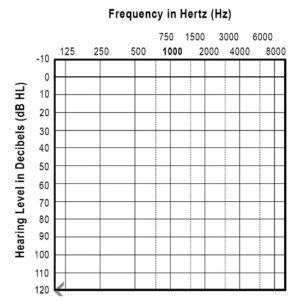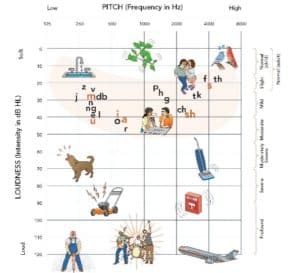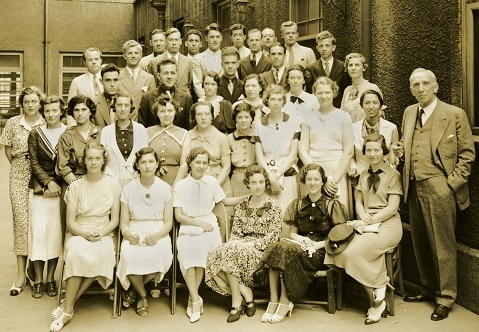
About Us
CID’s mission is to teach children who are deaf and hard of hearing to listen, talk, read and succeed. We empower families and professionals in St. Louis and worldwide to help children reach their fullest potential.
If you have a role working with children from birth to age 12 with hearing loss, you’ve come to the right place. CID has been developing research-based, classroom-trialed practices and educational curricula and tools since the founding of our school and teacher training program in 1914. The CID Emerson Center for Professional Development supports a variety of professionals including:
- teachers of the deaf
- special education / itinerant teachers
- general education teachers
- speech-language pathologists
- auditory-verbal therapists
- pediatric audiologists
- early intervention providers
- program administrators
- college professors
We aim to help you learn new strategies, teach students effectively and lead your team to new heights. Read our FAQs for professionals for more information.
What is hearing loss?
Hearing loss happens when something is not working in the typical way in the outer ear (what you see) or in the inner ear (what you don’t see). Hearing loss can also occur when there is a problem with the auditory nerve or how the brain processes auditory information.
What is an audiogram?
An audiogram shows what a child can hear. Loudness is shown vertically, with softer sounds at the top of the graph and louder sounds toward the bottom. Pitch is shown horizontally. Think of this as a piano keyboard with the lower pitches on the left side and higher pitches on the right side.

A Familiar Sounds Audiogram shows common environmental sounds in terms of their approximate pitches and loudness levels.
The peach-colored shape in the middle of the Familiar Sounds Audiogram is referred to as the Speech Banana. Sounds in the English language are represented within the speech banana.

A child with hearing loss may hear some or none of the speech sounds. Misunderstanding or not hearing speech sounds can change her understanding of what’s being said. The pediatric audiologist’s goal is to program hearing aids and cochlear implants so the child can hear speech. If a child can hear sounds within the speech banana when she is aided with hearing devices, she has a better chance of understanding and being able to reproduce those sounds.
For a child to develop listening and spoken language skills, it’s important to address any degree of hearing loss.
What is listening and spoken language (LSL)?
Listening and spoken language focuses on the goal of teaching children to listen and talk. This approach includes early identification of hearing loss and the fitting of appropriate hearing technology, early intervention, and a set of strategies and techniques to teach babies and children to use spoken language by developing listening skills.
What are possible academic and social implications of hearing loss?
Hearing loss can lead to speech and language delays, which can cause challenges in school. Reading, math and all academic subjects rely on excellent language skills. A child who is deaf or hard of hearing often needs intensive and direct language instruction to prevent academic delays. To provide appropriate support, a child’s educational team must also understand how hearing loss impacts academics by preventing auditory messages from getting to the brain.
Hearing loss, and any resultant speech and language delay, can also affect social skills. For example, a child who is deaf or hard of hearing may struggle to initiate play with peers, use the most recent slang phrases or join group conversations. The educational team must address social skill development so the student can be successful in all school activities.
What resources does CID offer professionals working with children who are deaf and hard of hearing?
CID offers a vast array of support for professionals working with children who are deaf and hard of hearing. Our specialty areas include auditory development, speech and language. In addition to tools and curricula that support professionals working with children in early intervention through school age, we offer on-demand learning, quick tip videos, downloadable materials, a blog, workshops, consultations and more.
A HISTORY OF LEADERSHIP
In 1914, Max Goldstein, MD, a prominent St. Louis ear, nose and throat physician, set out to do what most people believed impossible: teach deaf children to talk. During postgraduate medical training in Austria, he met Professor Victor Urbantschitsch, who had been working with deaf children in Vienna. This experience became the genesis for Dr. Goldstein’s vision, which included using residual hearing to help children with hearing loss speak intelligibly and achieve independence.

The 19th meeting of the Society of Progressive Oral Advocates, CID courtyard, 1936. Dr. Goldstein founded this organization, which later became the professional section of the Alexander Graham Bell Association for the Deaf and Hard of Hearing.
MEET OUR ADVISORY COUNCIL
We have gathered these leaders in the field of deaf education to gain their insights as we strive to develop the most effective and relevant programs and tools for professionals.
Christina Borders, Ph.D.
Illinois State University
Caroline Guardino, Ph.D.
University of North Florida
Maria Hartman, Ph.D., M.A.
Teachers College, Columbia University
Rebecca Jackson, Ph.D.
Minnesota Department of Education
Susan Lenihan, Ph.D., CED
Fontbonne University
John Luckner, Ed.D.
University of Northern Colorado
Connie Mayer, Ed.D.
York University
Jenna Voss, Ph.D., CED
Fontbonne University
